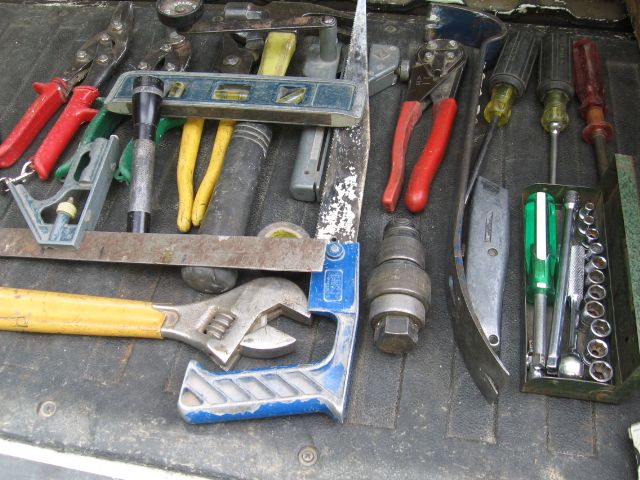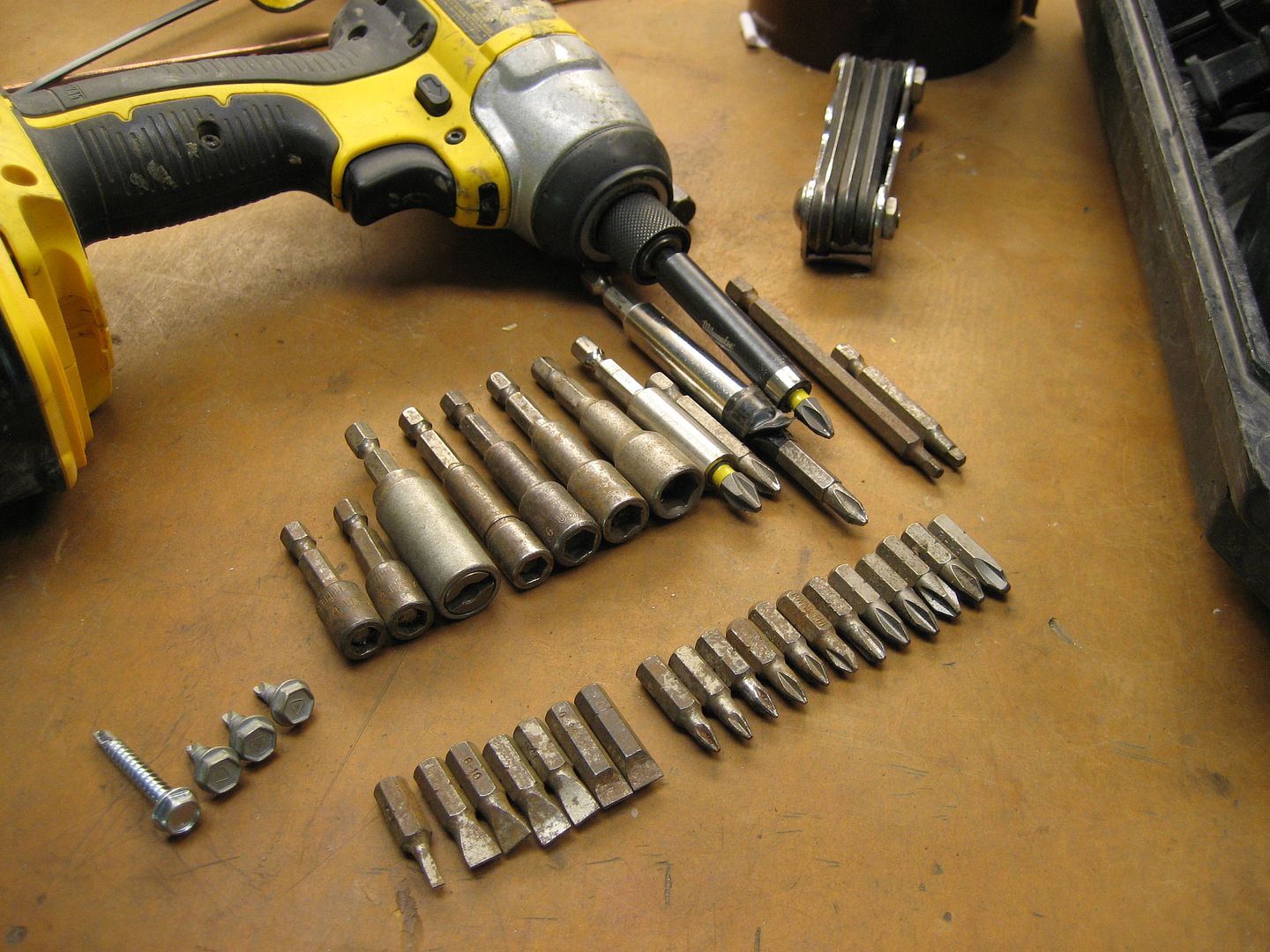Metal framing does have holes. I have tools to add more holes as needed. There is also an assortment of plastic bushing for the holes so that wires and plastic tubing are protected from the sometimes sharp metal edges. Also there are clips and support systems for metal boxes and plumbing. Many commercial jobs you will see carpenters adding Non-Com lumber. Non combustible lumber as backing for cabinetry, hand rails, extensive wood interior trim, etc. There are trim finish screw, that are used to install finish wood, to walls, framed with metal studs. ,You also see air tools/nail-ers with finish nails designed for the metal studs.
Standard tool in the truck, for every day wiring with metal framing. Stud punch, large tool with green handles. Works well with most framing 26 gauge and smaller. Structural studs require a metal hole saw.


Vice-grips, and large C-type vice-grips are used to attach metal boxes to studs. Once held with the C-clamps, self-taping, #6 or #8, pan head screws can be applied as a permanent attachment. The C-clamps are also used to support framing as screws are applied. Note that metal studs have a separate and different C-channel track used for floor/ceiling attachment of the framing. In most cases, Left (Green) and Right(Red) tin snips will cut the metal studs. Upper left in this picture. Band-aids, close by, is not a bad idea.

Other important tool is an impact driver, with an assortment of different tips, for the many different types of screws.

One more tool, for altering/ bending pieces of metal as needed.

Note that the wonderful metal framing pictured in this thread, required these tools, and maybe a few more.
Best wishes with your project. The world of metal framing is held together with #6 and # 8 screws. ![]()
![]()
Mike CT ![]()




